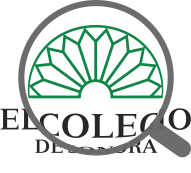| dc.contributor.author | Campos Delgado, Amalia E. | |
| dc.coverage.spatial | MX-SON | en-US |
| dc.creator | Campos-Delgado, Amalia;#0000-0002-1458-1243 | |
| dc.date | 2012-09-01 | |
| dc.date.accessioned | 2022-06-28T19:42:30Z | |
| dc.date.available | 2022-06-28T19:42:30Z | |
| dc.date.issued | 2012-09-01 | |
| dc.identifier | https://regionysociedad.colson.edu.mx:8086/index.php/rys/article/view/138 | |
| dc.identifier | https://doi.org/10.22198/rys.2012.55.a138 | |
| dc.identifier.uri | https://regionysociedad.colson.edu.mx:8086/index.php/rys/article/view/138 | |
| dc.identifier.uri | https://doi.org/10.22198/rys.2012.55.a138 | |
| dc.identifier.uri | https://repositorio.colson.edu.mx/handle/2012/45565 | |
| dc.description.abstract | The identity references of the inhabitants of border regions are not only constructed based on the relationships with those on the other side of the line, but also on the materialized distinction of the border itself. From a survey for the analysis of urban imaginaries and the construction of mental maps, this article analyzes how young men and women in the cities of Tijuana and Tecún Umán externalize the construction of the "other" who lives across the line. For these young people, the border has a differentiating function and the guidelines for crossing it are enforced by the "north", but it is their everyday practices that endow it with meaning. | en-US |
| dc.description.abstract | Los referentes identitarios que construyen los habitantes de las regiones fronterizas no están únicamente relacionados con los que están al otro lado de la línea, sino también con la materialización de la distinción, es decir, con la frontera en sí. A partir de la encuesta para el análisis de imaginarios urbanos y la construcción de mapas mentales, en este artículo se analiza la manera en que las y los jóvenes de las ciudades de Tijuana y Tecún Umán exteriorizan la construcción del “otro”, que vive al otro lado de la línea fronteriza. Para estos jóvenes, la frontera con la que conviven es, ante todo, diferenciadora y las pautas son impuestas por el “norte”, pero son sus prácticas cotidianas las que la dotan de sentido. | es-ES |
| dc.format | application/pdf | |
| dc.language.iso | spa | |
| dc.publisher | El Colegio de Sonora | es-ES |
| dc.relation | https://regionysociedad.colson.edu.mx:8086/index.php/rys/article/view/138/335 | |
| dc.rights | Derechos de autor 2017 Amalia E. Campos Delgado | es-ES |
| dc.rights | https://creativecommons.org/licenses/by-nc/4.0/ | es-ES |
| dc.rights | info:eu-repo/semantics/openAccess | es-ES |
| dc.source | 2448-4849 | |
| dc.source | 1870-3925 | |
| dc.source | región y sociedad; Vol. 24 No. 55 (2012): September-December | en-US |
| dc.source | región y sociedad; Vol. 24 Núm. 55 (2012): septiembre-diciembre | es-ES |
| dc.subject | Identity | en-US |
| dc.subject | Otherness | en-US |
| dc.subject | Borderland | en-US |
| dc.subject | Social imaginaries | en-US |
| dc.subject | Border | en-US |
| dc.subject | Youth | en-US |
| dc.subject | Identidad | es-ES |
| dc.subject | Alteridad | es-ES |
| dc.subject | Región fronteriza | es-ES |
| dc.subject | Imaginarios sociales | es-ES |
| dc.subject | Frontera | es-ES |
| dc.subject | Jóvenes | es-ES |
| dc.subject | Ciencias Sociales | |
| dc.subject.lcsh | Identity | en-US |
| dc.subject.lcsh | Otherness | en-US |
| dc.subject.lcsh | Borderland | en-US |
| dc.subject.lcsh | Social imaginaries | en-US |
| dc.subject.lcsh | Border | en-US |
| dc.subject.lcsh | Youth | en-US |
| dc.subject.lcsh | Identidad | es-ES |
| dc.subject.lcsh | Alteridad | es-ES |
| dc.subject.lcsh | Región fronteriza | es-ES |
| dc.subject.lcsh | Imaginarios sociales | es-ES |
| dc.subject.lcsh | Frontera | es-ES |
| dc.subject.lcsh | Jóvenes | es-ES |
| dc.title | La construcción del otro “del otro lado”. Imaginarios de frontera de jóvenes de Tijuana, México, y Tecún Umán, Guatemala | es-ES |
| dc.type | info:eu-repo/semantics/article | |
| dc.type | info:eu-repo/semantics/publishedVersion | |
| dc.audience | generalPublic | |
| dc.identificator | 5 | |










